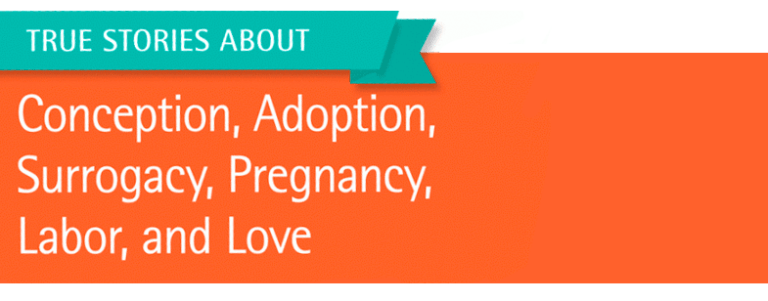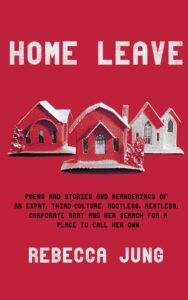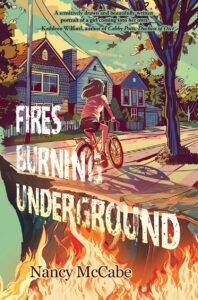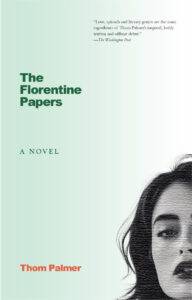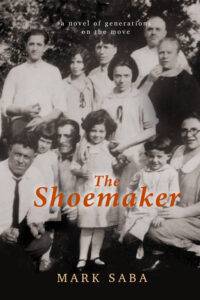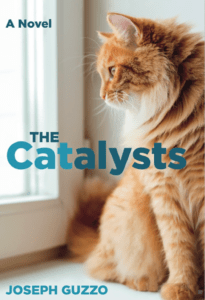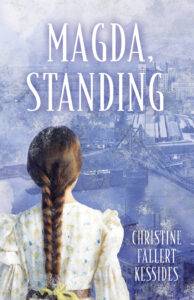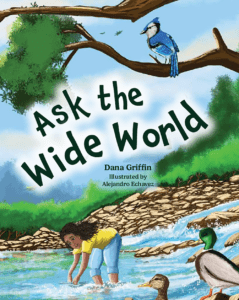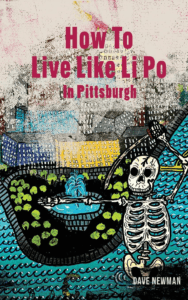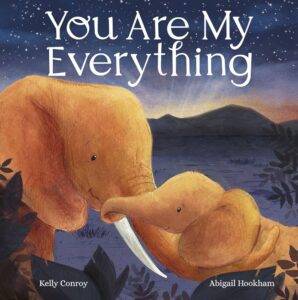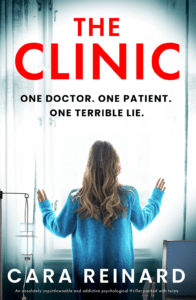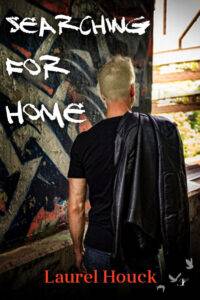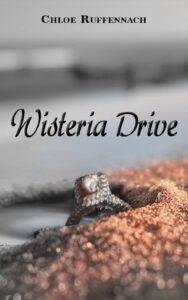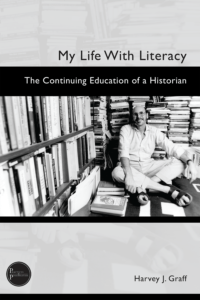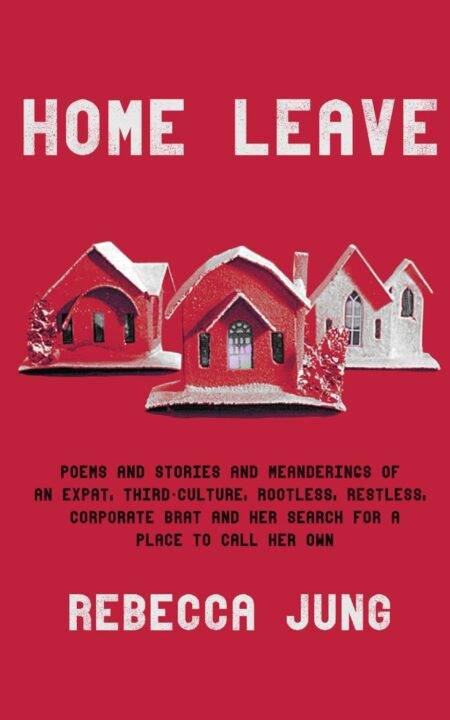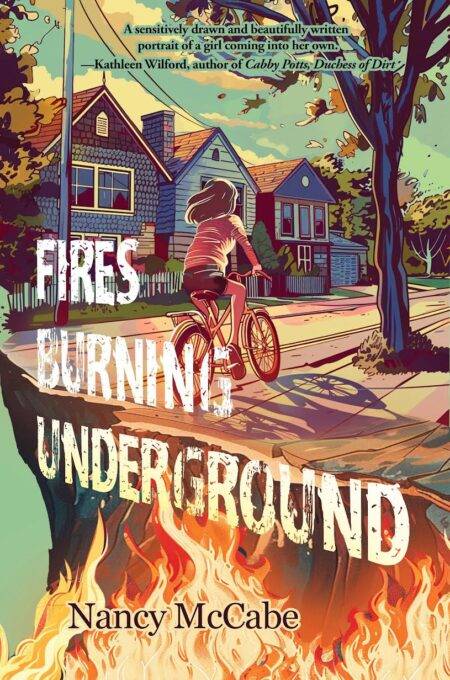Oh, Baby!: True Stories About Conception, Adoption, Surrogacy, Pregnancy, Labor, and Love (edited by Lee Gutkind and Alice Bradley) is now available from In Fact Books, the book publishing arm of Pittsburgh’s Creative Nonfiction. We’re thrilled to be able to share with you Nancy McCabe‘s story, “The Baby Room,” published here courtesy of Creative Nonfiction!
1.
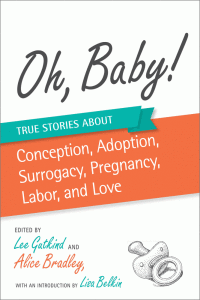 When she’s twelve, my daughter brings home an electronic baby, a lifelike seven-pound girl in a pink hoodie with the words Baby Think It Over in a circular logo on her chest. She has a round, baldish head and plump, wrinkled legs and perfect little toes, an outie belly button, and blue eyes. Right away my Asian-American daughter points out that her new baby looks nothing like her, but, she says, the school owns only Caucasian babies.
When she’s twelve, my daughter brings home an electronic baby, a lifelike seven-pound girl in a pink hoodie with the words Baby Think It Over in a circular logo on her chest. She has a round, baldish head and plump, wrinkled legs and perfect little toes, an outie belly button, and blue eyes. Right away my Asian-American daughter points out that her new baby looks nothing like her, but, she says, the school owns only Caucasian babies.
The baby is activated at four in the morning, making a soft, kind of creepy breathing sound. This is quite a change from the eggs we hauled around in our childcare classes. You didn’t have to feed or burp an egg, and if you wanted to make things easier on yourself, you just hard-boiled your baby.
My daughter awkwardly props the baby on her lap as we head off to dinner. Even though she casts skeptical, not-very-maternal looks at this baby, it’s strange to watch her with it. It feels as if we’re fast-forwarding fifteen or twenty years to the mother my daughter may someday be, while at the same time rewinding back to that baby I met many years ago in China, back when I knew less about infants than I knew about eggs.
2.
In a chaotic hotel room in Hangzhou, a man handed me a pink-cheeked ten-month-old who’d been drowsily relaxing a second before, whose eyes widened in alarm, whose body twisted back toward the man, eyes filling with panic. Around us, new parents cooed, babies cried, flashbulbs popped. The man backed away, looking sad but determined. I patted a bed and the man sat beside me with the baby between us, an attempt to make the transition a little more gradual. I didn’t know who this man was—someone who worked for the orphanage, I guessed.
She screamed for hours, cheeks blazing red, wispy hair damp from the heat, and then for days afterward she regarded me with those eyes that flashed between rage and distrust, humor and quick intelligence. At the Office of Civil Affairs, she saw the man for the last time and immediately strained her arms, lifting her whole body, trying to reach him. I handed her over, and he made a raspberry on her cheek. She laughed and laughed. When he handed me back to her, she became suddenly subdued. This time, she didn’t actively resist. She seemed resigned, even if she wasn’t entirely happy with the situation or with me.
At our last stop, the White Swan Hotel in Guangzhou near the American embassy, my daughter looked healthy and plump next to the more emaciated babies from other orphanages. It wasn’t until we returned to the United States that I understood she wasn’t a roly-poly baby with a rosy flush but, in fact, an underweight, lactose-intolerant baby with eczema.
These were things that could be fixed, though. Adoptive parents believe in the wonders worked by love and willpower and diet and medicine. We believe we can undo almost any damage.
3.
Our adopted children… most likely were in a prenatal environment in which their neurochemistry could have been altered due to the birth mother’s stressful environment. The circumstances that… lead a woman to choose adoption are usually difficult.
For a child who has been adopted internationally, chances are the birth mother was stressed during the pregnancy; in addition, the child’s first days were probably bleaker—little holding, rocking and warm milk given based on hunger. Then most likely the child was also neglected. It may not have been profound neglect. Food may have been available, but the child could only eat at certain hours. There was a caretaker to bathe and change clothes, but that woman was probably there for one shift until the next person took over to care for ten other children as well.
When a child experiences one of the risk factors listed above, the child can then have abnormal levels of certain neurotransmitters such as… cortisol….
… If the levels are off, this can impact healthy brain development and plasticity. For example, cortisol, which usually goes up with stress, provides energy for thinking and stamina for dealing with stress or a crisis.
—“Neurochemistry and the Adopted Child,” Nightlight Christian Adoptions, 2011.
4.
At first, I wondered if I’d adopted a supernatural child who could function without sleep. I’d read that babies my daughter’s age needed roughly fourteen hours a day. But my daughter didn’t fall asleep during naptime, and she wouldn’t settle down until late in the evening. Then she popped back awake the second she’d accumulated enough rest to keep going. This hypervigilance didn’t change much as she got older. She also wouldn’t eat unless I fed her, and sharp blood sugar plunges left her impossibly irritable. She had a tendency toward dehydration, stomachaches, headaches, mood swings, and rages as a baby, a toddler, a small child.
Even as she grew into a healthy, funny girl, she remained quick-tempered and easily triggered into tantrums that lasted for hours, even when she was four, five, six. Her screams escalated to rage, and she followed me around, flailing and head-butting me, staring me down through hurt, betrayed, angry eyes. She demanded: Attend to my pain, fix it. She hit me and scratched me and slammed doors and threw things. Once she threw a glass of water down the stairs. When it shattered below into shards of glass and puddles of water, she was surprised and terrified, as if she’d had no idea she could have that kind of impact on anything.
Who could I describe this behavior to without exposing my child to criticism or ridicule? Cautiously, I asked other parents if their children had outgrown tantrums. I listened carefully to stories of the offenses which had led them to put their children in timeouts or to take away privileges. I looked into the terrified eyes of my own daughter as she spun out of control. And more and more, I thought that something was wrong, that my daughter’s behavior wasn’t normal. I tried to physically restrain her to keep her from hurting me, but I was afraid I would hurt her in the process. I remember holding her, feeling her heart pumping fast, faster than I thought possible or normal, though her doctors never commented on it.
5.
Six and a half years after adoption, six- to twelve-year-old children reared in Romanian orphanages for more than eight months in their first years of life… had higher cortisol levels… than did early adopted (EA < or = four months of age)... and Canadian-born... children.... Furthermore, the longer beyond eight months that... the children remained institutionalized, the higher their cortisol levels.
—M. R. Gunnar et al., “Salivary Cortisol Levels in Children Adopted from Romanian Orphanages.” Abstract. Development and Psychopathology, 2001.
6.
Cortisol is an important hormone, known as the “stress hormone.” It regulates the metabolism of carbohydrates, fats, and proteins. It is the hormone that saves us in the event of an acute stress…. It is meant to give the body the reserves of strength it needs in these instances…. When cortisol levels remain high there are destructive side effects…. Bone and muscle mass are diminished. Systems for healing, metabolism, and immunity are depressed and blood pressure is raised…. Individuals experience mood alterations and insomnia.
—Koren Barrett, “Adrenal Health Solutions: Fatigue and Insomnia,” lecture for Foundation for Alternative and Integrative Medicine.
7.
Two hours after we are lulled into false security by the electronic baby’s quiet, steady breathing, it suddenly comes to life, emitting a pitiful, low cry. We’re eating omelets at Perkins, but my daughter lays down her fork and whips into action. She yanks the baby from its highchair a little overzealously, then feeds it a bottle until it coos. Seconds after my daughter returns it to its high chair, it cries again, an eerily real sound. My daughter sighs but holds the baby to her shoulder, patting its back, waiting for a burp. When the baby starts to cry again, my daughter gives me a look of pure despair but doesn’t ask for help. She removes the baby’s diaper and Velcros on a new one. The baby finally goes quiet.
My daughter can seem so competent and mature one moment, so uncertain and childlike the next, toting the baby at arm’s length when she isn’t lifting it in the air in a Lion King hold or twirling it around like a baton. I keep trying to show her how to cradle a baby, but my daughter’s having none of it.
“They should make it really realistic,” I tell her. “They should make an electronic baby who howls when you try to put her in a stroller, car seat, carrier, high chair, or bathtub.”
My daughter giggles. She loves hearing stories about her infant self.
“They should make an electronic baby with a poopy, leaky diaper,” I go on. “Or maybe one that gets pureed sweet potatoes all over its face, and then when you’re rushing to wipe them off because you’re late for work, she sticks her socked feet under the running water and giggles.”
My daughter laughs and laughs, looking pleased with herself, and I am enjoying amusing her, but I also feel a pang. If she’d been held as a little baby, would she know how to hold one? Did anyone come when she cried? Did anyone give her a bottle when she was hungry or take the time afterward to burp her, change her when she was wet? It used to make me uneasy how tolerant she was of wet diapers, toddling around in them without complaint, like she wasn’t used to anything else. Nor did she ever lift her arms to be held. Experience had taught her that no one would pick her up.
8.
Babies’ brains grow and develop as they interact with their environment and learn how to function within it. When babies’ cries bring food or comfort, they are strengthening the neuronal pathways that help them learn how to get their needs met, both physically and emotionally. But babies who do not get responses to their cries, and babies whose cries are met with abuse, learn different lessons. The neuronal pathways that are developed and strengthened under negative conditions prepare children to cope in that negative environment, and their ability to respond to nurturing and kindness may be impaired.
—Child Welfare Information Gateway, “Understanding the Effects of Maltreatment on Brain Development,” 2009.
9.
My daughter is three. The allergist, a pale and preoccupied man who blinks like he has just emerged from a cave, shoots questions at me. My daughter examines the little glass globes on his desk. One has an enlarged dust mite inside, another a great big ball of fuzzy ragweed, another a cat playing with yarn to represent cat dander.
“How does she react to prolonged time in moldy basements?” he asks.
“We don’t really spend time in moldy basements,” I respond.
“How does she do after spending a lot of time in highly dusty rooms?”
“I don’t think we’ve spent much time in highly dusty rooms,” I answer.
“If you scratch her skin, does it cause hives?”
“I’ve never purposely scratched her skin,” I say.
“Any heart palpitations vomiting double vision brain stem injuries knee surgery electric shocks arthritis glaucoma cuts or scratches tumors ulcers ingrown toenails kidney malfunction?” he rattles off without a pause, peering over his glasses at me as I shake my head since there are no openings for me to speak. He clearly doesn’t expect me to say yes to any of them, and the long list reminds me of how, despite the asthma, despite the endless tantrums, we’re pretty lucky.
My daughter refuses to talk at all and even makes little baby-babble sounds: goo goo and ga ga. He peers over his glasses at her. “She verbal?” he asks me. I burst out laughing.
As we leave, she drops the baby talk instantaneously and says, “Mom, why did the kids go in the attic and walk in front of their dad’s machine and shrink really small? Your shadow is giant, Mom. Why don’t you like pickles?”
And I laugh, thinking how normal she is after all, feeling as if she narrowly avoided life in moldy basements, dusty rooms, or orphanages, speech delays or serious illnesses or a deadened spirit, grateful at how happy and funny and healthy she is, really.
10.
My daughter is ten. It’s a hot, bright afternoon in Yiwu City, China. The big room is lined with cribs, each with a mattress and a baby but no blankets or toys or decorations. It’s too hot to need blankets for warmth, and apparently they’re not used as comfort objects, either; the only ones I see are ragged and stacked in a corner. A window is open, but there is no breeze.
It’s hard to say what this room, the place where my daughter spent the first ten months of her life, is like most of the time. There are no Chinese caretakers right now. Nurses visiting from Minnesota circulate, offering fingers to be gripped and hair to be pulled. They bring bottles and change diapers.
The babies are so quiet, with none of the crying or babbling or hammers crashing on xylophones that one might expect in a roomful of babies, and there are no familiar smells, either: no talcum powder or baby shampoo. I don’t know what to interpret as deprivation and what is just cultural difference.
My daughter and I turn in circles, dizzy, as all around us babies scoot to the edges of their cribs, some pulling up, watching all of the activity in the room. If I pick up the one with the little rosebud mouth, how can I also pick up the long-legged one, or the one with a diaper sagging out of her split pants, or the one with floppy hair? I finally lift one who is about the size my daughter was when I met her. She is solemn but seems pleased to be chosen. She doesn’t want to be held like a baby, though. Unpracticed at relaxing into an adult’s arms, she squirms around so she is facing the room, not me. This curious baby with scraggly hair and a onesie under split pants doesn’t smile, but she does cock her head, angling it to the right, to the left, intently studying the room from these new vantage points.
My daughter walks up and down along the cribs, pausing to study one baby, then another. She hesitates and then moves on. I don’t know what she’s thinking. Soon we’re called away, back to our busy day, which includes a shopping trip for toys to donate and an excursion to track down the man who boarded a train so many years ago to bring my daughter to me in Hangzhou. He is, we learn, a wealthy merchant whose wife worked for the orphanage. He used to pick her up in the evenings and, while he waited, he played with my daughter.
An orphanage worker helps us track him down in a remote village, where we walk down pathways spread with drying rice, past a woman beating clothes on a rock and a rooster flapping its wings. The orphanage worker gestures at us to wait as he runs down a hill in search of Mr. and Mrs. Lu. Soon they come jogging up an embankment, beaming. I try to hand him a picture of my daughter as a baby to remind him who she is, but he waves the picture away, as if to say that of course he remembers this baby.
Mr. and Mrs. Lu inspect my daughter, who stands patiently, slightly bemused, as they admire her and pronounce her a “very nice girl,” according to our guide. Everyone laughs and talks and smiles. We all pose to have our pictures taken together. My daughter seems at once so young and so old: quiet and shy, yet poised, carefully polite. We all dash off to lunch with Mr. and Mrs. Lu at an open-air restaurant with a bamboo roof.
Dishes of rice and vegetables and soup and meat are delivered to our table amidst the chaos of chattering and toasting and laughing. Mr. Lu keeps his eye on my daughter’s plate, refilling it regularly. She gamely eats whatever he gives her. She listens wide-eyed to the flurry of Mandarin around her and quietly basks in the attention of all of these people, gathered here just for her.
There is way too much talking for our guide to translate every word, but when she does, we listen carefully. “When she left,” our guide says to me, “he cried and cried.”
I’m startled. Mr. Lu beams at both of us, and my daughter’s mouth quirks up in a slow, polite smile.
“She was sad, too,” I answer. “She missed him.”
The moment passes so fast, I wonder later at how we almost missed it, this assurance that someone cared for my daughter before she was mine. Someone paid attention to her and played with her and, through such simple kindness, taught a baby that she could love and be loved.
11.
Serotonin is a protective neurotransmitter in the brain with primarily inhibitory functions…. [It] is produced naturally when a parent cuddles, holds, rocks or soothes their child…. Children who don’t receive touch… during their early months… may have alterations in their neurochemistry which induce decreased levels of serotonin in addition to elevated levels of cortisol. Sadly, children who come from emotional “war zones” may ultimately develop neurochemistry akin to that of the Vietnam war veterans.
—Karyn Purvis, “Creating Safe Places for Our Children,” Fostering Families Today, April 2005.
12.
The evening after our first orphanage visit, we return to the building to meet a delivery truck carrying crates of colorful, easy-to-wash plastic toys and squeaky animals. Staff members crowd around, slicing open boxes, examining toys, comparing item numbers to those on the packing list. My daughter and I watch for a few minutes. Then she nudges me.
I follow her gaze to the heavy door of the baby room, slightly ajar. No noise comes from the room, only a slice of light that paints the floor. We creep over, glance inside. At first I think that all the babies are asleep. Then I catch a flicker of movement. I crane to see. Some of the babies are still, curled up on their sides. But many simply lie open-eyed, staring at the ceiling.
My daughter and I exchange a glance. And then we are through the door, into this hot, oddly-hushed room where for now, at least, there is no one else over the age of two. Maybe there are caretakers who are usually here, who are now in the hall, unpacking. We tiptoe and whisper, as if we have entered a forbidden realm and broken the rules by sneaking in here without permission.
The babies who are still awake don’t seem surprised by, or interested in, our intrusion. They mostly lie listless and unblinking in the airless room. My cousin, who also adopted a baby from China, told me her daughter didn’t cry for the first couple of weeks. “She doesn’t want anything,” my cousin said. “She doesn’t understand yet that she’s allowed to have desires.”
None of these babies straggle to their feet and reach for strangers. No one launches a full-voiced, full-bellied cry. Only one baby, with a Band-Aid on its cheek, seems animated. It—I can’t tell if it’s a boy or girl—bangs its head against the mattress, emitting low keening noises, thin and hoarse. “Ma ma ma ma ma ma ma,” it says. I stroke its bald, fuzzy head. “It’s okay, baby,” I whisper, but I don’t have any way of knowing if this baby, if any of them, will be okay.
Leaving behind that baby room, I also leave behind the naiveté I have cultivated for so many years about my own daughter’s early life. I understand much better the limits of good intentions in the face of strained resources. The word neglect means something different to me now.
13.
After our first trip back to China, what was mythical in our minds became real. For my daughter, a vague sense of place has turned into a country of shoving crowds, shiny floral traditional dresses, and women in business suits and heels, erhus with twisted silk strings, calligraphy and cloisonné ornaments, jade jewelry and squat toilets and placid pandas munching on bamboo, ancient cities and statues of warriors long buried underground, dumplings and chrysanthemum tea and overnight trains and people gathering in public parks to row boats, play cards, and sing opera. And a building, gated off from a city, containing a room full of babies who, we want to imagine, are all being adopted right now.
For a while, my daughter seems to relax into her life with a new maturity, maybe because she’s getting older, maybe because the trip to China has given her a greater sense of security about her identity. She seems less high-strung and begins to sleep more normally, though sometimes, I think, excessively, as if making up for the years of so little sleep.
14.
At eleven o’clock on the night my daughter brings home the electronic baby, it starts an endless cycle of fussing to be fed, burped, changed. Then again at midnight, at twelve thirty in the morning, at one. Somehow my daughter, who can sleep right through a blaring alarm clock, manages to wake and tend to her baby. She groans and then paces the floor, waking me up every time. By two I’m yelling across the hall that maybe she should let the baby cry. “Try Ferberizing,” I shout, but my daughter, already wise or just concerned about her grade, ignores me.
When my daughter was a sleepless baby, a lot of people advised me to sleep-train her. “Just let her cry it out or she’ll never develop good sleep habits,” they told me.
“Oh, no,” said my adoption agency social worker, an adoptive mom herself. “Never let an adopted child cry it out. Our babies have been through enough trauma. Let her know that you’ll always respond to her needs.”
I followed her advice, sitting up night after night, holding this baby who would not sleep, who laughed and played, whose eyes drooped but who jolted wide awake at the smallest noise or movement, who cried when I tried to put her in her crib.
I’m impressed at how my twelve-year-old daughter likewise tends to her baby. But then she falls asleep and, at four in the morning, wakes and screams, “I think I killed the baby! She’s not breathing!”
Oh, good, I think. Now I can sleep. And without getting up to investigate, I drop off again.
15.
When my daughter is thirteen, we return to the orphanage a second time. Mr. and Mrs. Lu bound down the steps to greet us. They level their hands, beaming, and I understand they are commenting on how much my daughter has grown. We meet with the staff, have lunch with the Lus, and walk up and down streets, searching through small stores, cave-like stalls crowded with tools and tables and appliances in boxes. We shop for a sewing machine to donate to the orphanage. Then we head back once again to visit the baby room.
Healthy babies are now being sent into foster care. The government has begun to encourage domestic adoption and the one-child policy has been slightly relaxed. The children in institutional care are mostly disabled. In the playroom, toddlers scoot around in beat-up bouncy seats and line up in wooden chairs to watch Teletubbies on a small TV screen above them. They jump up to wave their arms and dance. The room is bare and stark and hot, and there are no toys anywhere. I wonder if the ones we donated have all worn out or have been given to departing children.
Toddlers grab at our legs and our hands as we pass. One girl whose skin is covered with brown patches wants me to pick her up, but when I do she goes limp and floppy. When I put her down, she takes my hand and tugs me around the room. She calls me “Mama.” My daughter, who received an A for her baby project, though with a slight deduction for “rough handling,” stands beside me, watching. I don’t know if she’s thinking of her own past or future or only feeling shy and uncertain in the moment.
The inhabitants of the baby room lie listlessly on the bare boards of their crib beds: a tiny one who has albinism, his shock of pale hair and white skin startling in the midst of all of these other Chinese babies; babies with enlarged heads, babies with crossed eyes, a baby whose top lip folds back like a blossom before it opens to sunlight, whose eyes are curious and who laughs when I carry him and talk to him. Later, these babies will be what I think of when American friends make fun of their own complaints, calling them “first-world problems.”
16.
A month later, while visiting my friend Lizanne in Pittsburg, Kansas, I first learn of the research on adopted children and cortisol levels. While we drink tea in the kitchen and our Chinese daughters hang out together in the living room, Lizanne tells me how, in studies of babies who’ve been in institutional care, cortisol, the hormone that regulates fight-or-flight responses, often remains imbalanced for years. She describes the symptoms of this imbalance: hypervigilance, rapid heart rate, dilated pupils, stomachaches, headaches, dehydration, low blood sugar, impulsiveness, mood swings, test anxiety, sleep issues. It feels like she’s describing my daughter. Eventually, she has heard, cortisol levels balance out, often around the age of ten. This was, indeed, when my daughter began to sleep more.
I read more about this as soon as I return home to Pennsylvania. Some informed blogger moms maintain that high cortisol levels often turn into low cortisol levels after the age of ten, which seems to fit my daughter’s patterns: she now sleeps a great deal, seems chronically fatigued, is anxious, still has stomachaches and headaches. But tests suggest that her cortisol levels are normal. Her doctor wants her to see an endocrinologist, but I decide that it’s better for the moment to address my daughter’s anxiety by other means. In the end, studies about adoption and neurochemistry remain too inconclusive.
17.
Authors [examining connections between cortisol levels and abuse and neglect]point out that there seem to be no overall differences in cortisol levels between all types of maltreated children and non-maltreated children. However, like so many biological characteristics, cortisols vary with respect to time of day, and the pattern of that variation may be different for children who have been extensively maltreated…. The cortisol measure is not related in a simple way to whether a child has or has not been maltreated.
—Jean Mercer, “Cortisol Levels: Do They Identify Neglected or Abused Children?” Childmyths, September 28, 2010.
18.
Someday, when more is known about the relationship between early abuse or neglect and physiology, I imagine we’ll look back with new insight about our own experience. But for now, I know just enough to thank unknown caretakers, mostly women, including Mrs. Lu. I know just enough to be glad for visitors and nurses from Minnesota and my wise social worker in South Carolina and Mr. Lu, who took the time to hold and feed and play with my daughter. I know just enough to believe that lives and hearts might be saved through such small interventions.
19.
My daughter is thirteen, and we have just left the baby room full of disabled children. “Will they be adopted?” I ask, and our guide, who, it turns out, understands little English, looks alarmed, as if I’m asking to take them home with me. “You must go through the proper channels,” he stammers.
At a big round table in a restaurant’s private room, our guide stares at me blankly when I ask him to translate my questions for the Lus. Since we can’t communicate through language, we all mostly just beam at each other.
Mrs. Lu touches my daughter’s long hair approvingly. We all beam.
Mr. Lu pours some tea and we all drink some and beam.
The Lus’ eight-year-old grandson spins around the room, and we all beam.
I’m starting to get a headache from smiling so hard when waiters mercifully appear with huge platters of beef and fish, rice and soup.
We pass food and beam at each other. Everyone admires my daughter’s grace with chopsticks. We eat, we beam. There is so much I would like to ask, but there is no way to do so.
Then Mr. Lu folds his arms and sways them, and I understand: he is reminiscing in pantomime.
I point at him and then clutch at my own shirt. I say, “Waa, waa, waa.” Everyone laughs.
And then Mr. Lu passes me an invisible baby, his memory of the baby my daughter was, and I pretend to take her while he wipes a memory of tears from his eyes.
My daughter watches us pass her imaginary baby self back and forth, and although she is now a teenager, prone to rolling her eyes and saying, “Stop talking, Mom,” this time she just smiles.
Nancy McCabe is the author of four memoirs, most recently From Little Houses to Little Women: Revisiting a Literary Childhood. Her work has received a Pushcart Prize and has made six appearances on notable lists of Houghton-Mifflin Best American anthologies. She directs the writing program at the University of Pittsburgh at Bradford and teaches in the Spalding University low-residency MFA program.


